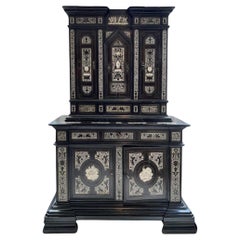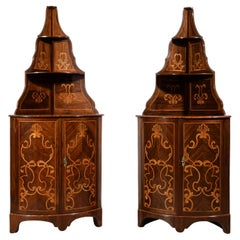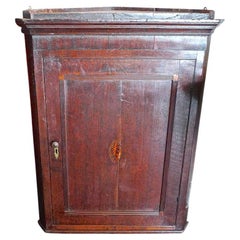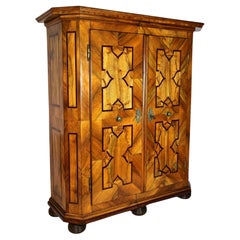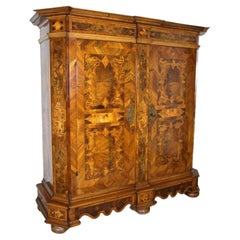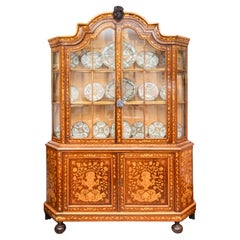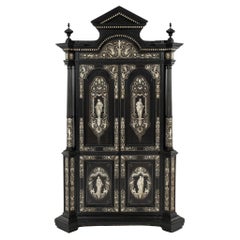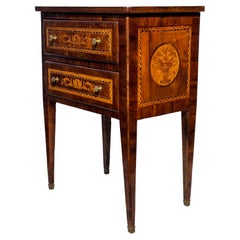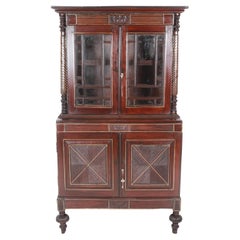18th Century Inlay Cabinet
Antique 18th Century Italian Cabinets
Bone, Wood
Antique Mid-18th Century Italian Baroque Corner Cupboards
Wood
Antique 18th Century English Corner Cupboards
Oak
Antique Late 18th Century Austrian Baroque Cabinets
Nutwood, Oak
Antique Late 18th Century Austrian Baroque Cabinets
Maple, Nutwood, Poplar, Walnut
Antique Late 18th Century Dutch Other Cabinets
Wood, Mahogany
Antique 18th Century Italian Baroque Cabinets
Wood
Antique 18th Century Italian Commodes and Chests of Drawers
Walnut
Antique 18th Century Indian Dutch Colonial Cabinets
Rosewood
Antique 18th Century Swiss Cabinets
Marble
Antique 18th Century French Baroque Cabinets
Stone, Bronze
Antique Late 18th Century German Louis XVI Cabinets
Bronze
Antique Early 18th Century Italian Baroque Buffets
Bronze
Antique 18th Century Italian Baroque Secretaires
Brass, Iron
Antique 18th Century Italian Secretaires
Ash, Walnut
Antique Late 18th Century French French Provincial Cupboards
Oak
Antique Early 18th Century Italian Baroque Commodes and Chests of Drawers
Wood
Antique 18th Century Linen Presses
Walnut
Antique 18th Century Spanish Wardrobes and Armoires
Boxwood, Walnut
Antique 18th Century British George III Sideboards
Wood
Antique 18th Century Italian Louis XVI Commodes and Chests of Drawers
Fruitwood
Antique Mid-18th Century Italian Credenzas
Bronze
Antique 18th Century Italian Commodes and Chests of Drawers
Walnut
Antique Late 18th Century Italian Neoclassical Commodes and Chests of Dr...
Marble
Antique 18th Century French Louis XV Wardrobes and Armoires
Steel
Antique Late 18th Century English Regency Secretaires
Mahogany, Satinwood
Antique Early 18th Century English George I Cabinets
Walnut
Antique 18th Century French Commodes and Chests of Drawers
Wood
Antique Mid-18th Century German Commodes and Chests of Drawers
Walnut
Antique 18th Century German Commodes and Chests of Drawers
Fruitwood, Walnut
Antique Late 18th Century Italian Neoclassical Commodes and Chests of Dr...
Satinwood, Walnut
Antique 18th Century European Renaissance Revival Blanket Chests
Iron
Antique Early 18th Century Italian Louis XIV Dressers
Brass
Antique 18th Century American Secretaires
Brass
Antique Late 18th Century Austrian Buffets
Brass
Antique 18th Century English Commodes and Chests of Drawers
Walnut
Antique 18th Century French Commodes and Chests of Drawers
Wood
Antique 18th Century Italian Commodes and Chests of Drawers
Chestnut, Oak
Antique Late 18th Century Italian Neoclassical Commodes and Chests of Dr...
Cherry, Walnut
Antique 18th Century Italian Corner Cupboards
Walnut
Antique 18th Century Italian Commodes and Chests of Drawers
Wood
Antique Late 18th Century Italian Neoclassical Commodes and Chests of Dr...
Walnut, Fruitwood
Antique Late 18th Century Italian Neoclassical Commodes and Chests of Dr...
Cherry, Satinwood, Walnut
Antique 1760s Dutch Louis XV Secretaires
Walnut
Antique 18th Century English Commodes and Chests of Drawers
Walnut
Antique Late 18th Century Neoclassical Commodes and Chests of Drawers
Satinwood, Walnut
Antique 18th Century and Earlier British George III Commodes and Chests ...
Mahogany
Antique 18th Century British Georgian Commodes and Chests of Drawers
Mahogany
Antique Late 18th Century Dutch Neoclassical Wardrobes and Armoires
Mahogany
Antique 18th Century English George III Desks
Mahogany
Antique 18th Century French Louis XV Buffets
Walnut
Antique Mid-18th Century Italian Neoclassical Commodes and Chests of Dra...
Walnut
Antique Mid-18th Century Italian Louis XV Cabinets
Bronze
Antique Early 18th Century Italian Baroque Cabinets
Crystal, Brass
Antique Early 18th Century Italian Baroque Commodes and Chests of Drawers
Walnut
Antique Early 19th Century Italian Commodes and Chests of Drawers
Brass
Antique Early 18th Century English George II Blanket Chests
Oak
- 1
- ...
Read More
The Ultimate Guide to Types of Tables for the Home
Whether you’re just moving in or ready to give your home a makeover, our guide will give you pointers on tables that are fitting for every room, nook and hallway.
What Exactly Is a Secretary Desk, and What Is It Used For?
The furniture equivalent of a Swiss Army knife, it's the multifunctional piece you didn't know you needed.
This Shelving System with Oxidized Brass Tubes Is Retro and Futuristic at Once
Italian studio DimoreMilano mustered great ingenuity when crafting these sculptural shelves, which are built without any screws.
28 Cheerful Home Bars, Where Everybody (Literally) Knows Your Name
Simple or sophisticated, equipped with console, cart or custom cabinetry, these stylish bar areas deserve a toast.
Ask an Interior Designer: Work-from-Home Edition
Leaping into a design project, whether it's refreshing the bedroom or redoing the whole house, can be overwhelming. Luckily, we know more than a few interior designers. You asked questions on Instagram, and now they're answering.
Collected and Eclectic, ‘Wunderkammern’ Are Back in a Big Way
Introduced nearly 500 years ago, curiosity cabinets are finding new fans among today's collectors and designers.
Meet the Incredible Woman Transforming Fallen Trees into Sleek Furniture
In the hands of New York Heartwoods cofounder Megan Offner, unwanted local trees become works of design art.
These New York Architects Love a Complicated Project
From Brooklyn townhouses to Maine campgrounds, Trattie Davies and Jonathan Toews relish a challenge, like transforming a former warehouse space into the new 1stdibs Gallery.
